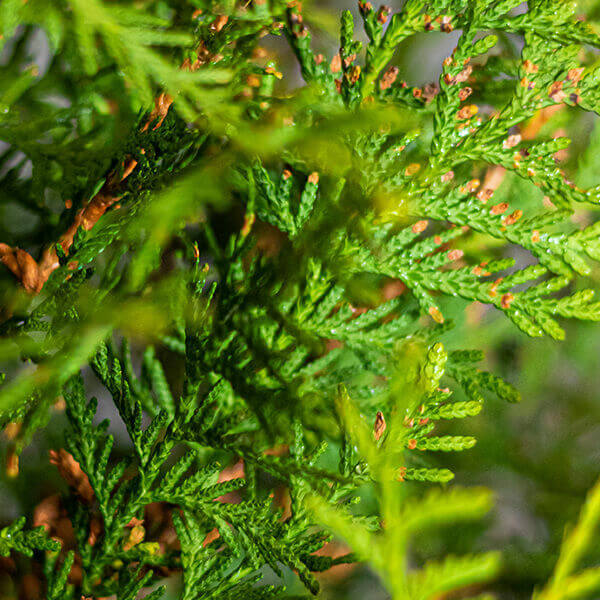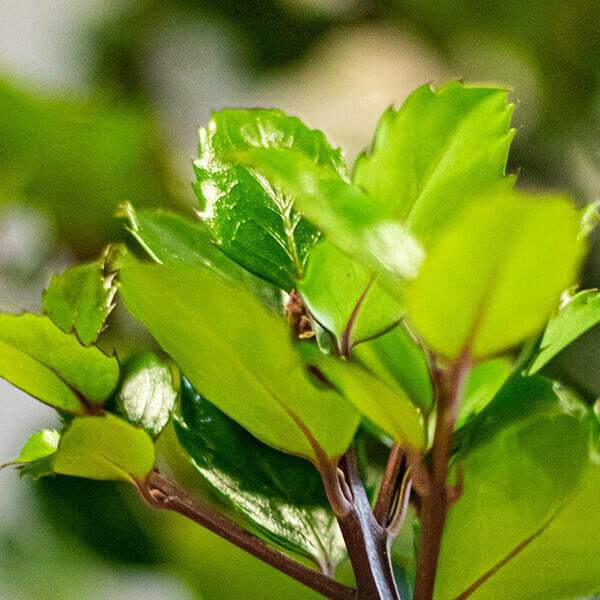Best Hedge Plants For Low Hedges
Best Hedge Plants For Low Hedges
Blog Article
Hedge Plants For Texture
Enhance your garden's appeal with rich hedge varieties such as Yew (Taxus), Thuja, Laurel, Photinia, and Bamboo, celebrated for their structural stability and ecological benefits.
Yew and Thuja provide evergreen protection and winter season durability, while Laurel offers fast development and broad, aromatic leaves.
Photinia includes seasonal appeal with its vibrant red foliage, and Bamboo provides a low-maintenance, peaceful ambiance.
These hedges improve air quality, reduce noise, and develop tranquil, personal spaces.
Correct planting, spacing, and upkeep ensure vigorous development and eco-friendly harmony.
Explore how these rich ranges can raise your garden's beauty and well-being.
Key Takeaways
Change Your Garden With Lush Hedge Ranges
- Select Yew for its thick, evergreen development and unparalleled longevity.
- Opt for Laurel for its fast growth and broad leaves, ensuring quick privacy.
- Choose Photinia for its dynamic seasonal foliage, which turns a striking dark red.
- Use Bamboo for a low-maintenance, winter-hardy hedge with aesthetic appeal.
- Area plants 2-3 per meter and prune routinely for optimal growth and health.
Popular Hedge Plants
When changing a garden with lush hedge varieties, it's vital to consider popular hedge plants such as Yew, Thuja, Laurel, and Photinia due to their special qualities and advantages.
Yew (Taxus) is extremely esteemed for its longevity and dense, green development, making it a prime option for withstanding landscapes.
Thuja is kept in mind for its evergreen foliage and robust winter season durability.
Photinia includes seasonal vibrancy with red leaves that darken gradually, producing dynamic visual appeal.
Laurel provides quick development and aromatic, broad leaves, perfect for fast privacy.
Additionally, Bamboo is an outstanding choice for ambiance, using a low-maintenance, winter-hardy alternative that improves the garden's aesthetic with its elegant, swaying walking canes.
These choices accommodate a variety of horticultural needs and choices.
Advantages of Garden Hedges
Garden hedges offer a wide range of benefits, making them an important addition to any landscape. These natural barriers are cost-efficient to execute and offer significant wind defense, improving air circulation and adding to noise reduction. The thick foliage of hedges like Thuja and Beech makes sure personal privacy by blocking exposure, creating a secluded and serene environment.
Hedges also play a vital role in microclimate guideline, offering a stable environment that cultivates plant growth and decreases temperature fluctuations. Their complex leaf structures filter pollutants, enhancing air quality and contributing to a much healthier garden environment.
Furthermore, hedges master noise decrease, absorbing and deflecting acoustic waves to lower ambient noise levels. This dual performance of providing both acoustic and visual privacy boosts the general harmony and visual appeal of any garden.
Planting and Maintenance Tips
For an effective hedge, careful preparation of the planting area is important. Make sure the soil has proper pH and drain to support strong root advancement.
Space the plants properly for the picked species. Water the hedge frequently during its preliminary development phase, changing as needed with seasonal modifications.
Execute a organized pest control and disease prevention method, utilizing natural or chemical treatments when essential. Frequently check for aphids, termites, and fungal infections.
Apply mulch to keep moisture and reduce weeds. Seasonal pruning promotes thick growth and air circulation, essential for plant health.
Following these standards will help you cultivate a dynamic, well-kept hedge that boosts the beauty of your garden.
Spacing and Trimming Standards
Spacing and Cutting Standards
Correct spacing and trimming are vital for cultivating healthy, visually appealing hedges. Adequate spacing ensures each plant receives enough nutrients, light, and airflow.
Follow these standards for ideal hedge upkeep:
- Spacing: Position hedge plants 2-3 plants per meter to encourage robust development.
- Pruning Methods: Regular pruning is important for maintaining preferred hedge height and shape. Trim new growth in summertime and cut back older wood during winter season.
- Seasonal Care: Adjust cutting schedules and methods according to seasonal requirements to ensure plant health.
- Hedge Height: Frequently display and trim to keep the preferred hedge height and achieve uniform visual appeals.
Following these actions will ensure your hedge grows, boosting both the appeal and functionality of your garden.
Selecting the Right Hedge
Picking the Right Hedge
Picking the proper hedge includes evaluating factors such as mature height, foliage density, Additional resources and environmental durability. Effective hedge plant choice requires understanding each species' growth attributes and site-specific flexibility.
For instance, Yew (Taxus) provides excellent durability and thick growth, while Thuja is notable for its winter season strength. Furthermore, considering maintenance requirements is crucial; fast-growing types like Laurel or Privet demand routine trimming, whereas low-maintenance options like Bamboo or Ivy may be more effective for those seeking very little upkeep.
Ecological elements such as soil type, light availability, and wetness conditions must likewise direct the choice process. This mindful approach makes sure the chosen hedges will grow, providing both practical and visual advantages to the garden landscape.
Delivery and Planting Advice
To guarantee your hedge plants grow, they ought to be provided by specialized carriers and planted immediately upon arrival.
Follow these necessary steps for successful planting:
- Soil Preparation: Enhance the soil with natural matter to enhance drainage and nutrient content.
- Planting Depth: Create a trench twice the width and equivalent to the depth of the root ball.
- Watering Methods: Water completely after planting, keeping the soil regularly wet however not filled.
- Mulching: Use a layer of mulch to maintain wetness and reduce weeds.
Consumer Assistance and Service
Offered the essential function of prompt support in horticultural pursuits, our consumer assistance group is readily available 6 days a week through telephone, e-mail, and social networks to use skilled guidance and quickly deal with any concerns. Their dedication to quick action times makes sure consumer satisfaction by resolving inquiries associated with plant health, ideal planting methods, and upkeep schedules.

Response Time
-----------------
Six days a week
Within 48 hours
Social network
This comprehensive assistance system, reinforced by a stellar 9.3/ 10 client rating, highlights our commitment to improving the gardening experience for every single customer.
Regularly Asked Questions
How Long Does It Consider Hedge Plants to Establish?
Hedge plants generally require one to 3 years to end up being fully established, with the precise period varying by types and growing conditions.
Efficient care throughout this vital duration is essential for robust development. Consistent watering, vigilant weed control, and proper fertilizer application are pivotal in promoting strong root development.
For instance, fast-growing types like Laurel might establish quicker, while slower-growing varieties such as Yew may take longer. Thorough upkeep speeds up the facility process, leading to healthy and thick hedges.
What Are the very best Hedge Plants for Privacy?
The question of the very best hedge plants for personal privacy includes assessing evergreen and deciduous options.
Evergreen hedges like Thuja, Laurel, and Cypress supply year-round protection, guaranteeing continuous personal privacy.
In contrast, deciduous hedges such as Beech offer seasonal personal privacy, shedding leaves in colder months.
Secret maintenance ideas for privacy hedges include regular cutting, fertilizing in spring, and appropriate spacing-- normally 2 to 3 plants per meter.
In addition, consistent watering and persistent weed removal are essential for promoting healthy, dense development.
Can Hedge Plants Bring In Wildlife to My Garden?
Yes, hedge plants can attract wildlife to your garden by offering essential benefits like shelter, food, and nesting sites, therefore enhancing local biodiversity. For example, yew, holly, and laurel are excellent for drawing in birds, while ivy supports a range of pests.
However, it's essential to keep in mind that there are some downsides, such as increased maintenance to manage bugs and routine upkeep. Carefully choosing and maintaining hedge varieties can help balance these disadvantages and benefits, eventually cultivating a sustainable and vibrant community in your garden.
Are There Any Blooming Hedge Plants Available?
Yes, there are flowering hedge plants readily available that can boost the charm of your garden.
For example, Elaeagnus, likewise called Olive Willow, produces aromatic white flowers in the fall, adding a touch of sophistication.
Photinia, another popular option, showcases dynamic red leaves that mature into an abundant green, producing a dynamic visual result throughout the seasons.
To make sure these plants grow, it's important to practice proper pruning strategies and seasonal maintenance, such as cutting new growth in the summer and cutting down in the winter season.
These measures will assist preserve the health and visual appeal of your blooming hedges.
How Do I Avoid Insects in My Hedge Plants?
To avoid pests in hedge plants, employ natural insect control techniques and preserve appropriate hedge care. Present helpful bugs like ladybugs, which victimize damaging bugs, to develop a balanced community.
Regularly examine your hedges for indications of infestation and immediately get rid of any affected parts to prevent the spread. Guarantee the health of your hedges by using well balanced fertilizers and supplying adequate water.
Use mulching to keep soil wetness and appropriate spacing to lower plant tension and promote robust development. These practices jointly assist in minimizing pest issues and maintaining a healthy hedge.
Conclusion
In essence, choosing the right hedge ranges such as Yew, Thuja, and Laurel can change any garden into a serene sanctuary. These plants offer year-round greenery, improve aesthetic appeal, and offer useful advantages like sound reduction and wind security.
Proper planting techniques, precise spacing, constant watering, and seasonal trimming are important for optimal development.
Reputable delivery services and professional client assistance guarantee a seamless experience from purchase to planting, making it simpler than ever to raise your outdoor space.
Garden hedges use a wide variety of benefits, making them an important addition to any landscape. These natural barriers are economical to execute and provide substantial wind security, enhancing air circulation and contributing to noise reduction. The dense foliage of hedges like Thuja and Beech ensures personal privacy by blocking visibility, producing a secluded and tranquil environment.

Pruning Techniques: Regular pruning is important for maintaining desired hedge height and shape. Cut brand-new development in summertime and cut back older wood during winter season.
Report this page